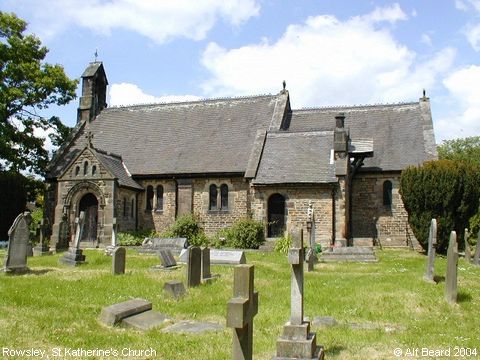St Katherine's Church

The school is closely linked to St Katherine's Church, Rowsley and is part of the Benefice of Bakewell with Over Haddon, Rowsley, Ashford in the Water and Sheldon. The school is situated a 5 minute walk from the school building.
The Church is a Grade 2 listed building and the foundation stone was laid on 29 May 1854 by John Manners, 7th Duke of Rutland,
who laid coins of every value, from a sovereign to half a farthing, in the foundations. The church was built to the designs of the architect Anthony Salvin. It was dedicated to St Catherine, after the name and in honour of the late Lady Manners. The church was consecrated by the Bishop of Lichfield on 18 July 1855.
The north aisle and chapel were added in 1859. The church is in Norman style, and is built in sandstone with a tile roof. It consists of a nave, a north aisle and chapel, a south porch, and a chancel with a vestry and an organ chamber. At the west end is a buttress corbelled out to carry a double bellcote with a colonnette. The south porch is gabled, it has a round-arched entrance with a moulded surround and colonnettes, and above it is a stepped triplet of blind round arches
In 1862 a mortuary chapel was erected to contain a monument erected to the late Lady John Manners, the first wife of John Manners, 7th Duke of Rutland.
The figures were carved of white statuary, the columns of russet marble, and the other portions of Darley Dale stone. It was executed under the superintendence of Anthony Salvin, the figure executed by William Calder Marshall, and the sculpture and architectural part of the monument by J. Forsyth of Hemsptead Road, London. The floor was inlaid with marble mosaics displaying the circle and the cross.
Services are Sunday morning at 11.00am
First and Third in the month - Holy Communion
Second and Fourth in the month - a congregational led Morning Prayer
The school regularly has Collective Worship and services throughout the Christian calendar in St Katherine's Church.
Church of England schools are established primarily for the communities they are located in. They are inclusive and serve equally those who are of the Christian faith, those of other faiths and those with no faith.
A core desire that we have found expressed in many ways is for ‘life in all its fullness’ (John 10:10). It is about ‘educating the whole person’, what the 1988 Education Reform Act (in a programmatic statement that remains in force and is deservedly influential) sees as physical and intellectual development united with spiritual, moral, social and cultural development.

